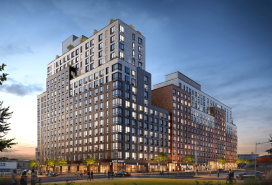What’s the best way to find an accessible NYC rental building for someone with a disability?

New buildings, as well as older ones undergoing major alterations, are required to comply with accessibility standards under the Americans with Disabilities Act.
My father has a disease that causes progressive weakness and he’s prone to falls. What’s the best way to find a rental building that is accessible, with an apartment set up for someone like him? He needs shower bars and wider doorways to accommodate the wheelchair that he will eventually require.
Your best bet is to look for apartments in newer New York City buildings, which are likelier to be accessible to people with disabilities, our experts say.
"Generally, newer buildings have accessible bathrooms with wider entrances for bathrooms. My suggestion would be to look for buildings that were recently built, or to contact a realtor and specify your needs," says Kara Rakowski, a partner with Belkin Burden Goldman, who conducts training seminars on NYC and NYS human rights compliance.
New developments and older buildings undergoing major alterations are required to comply with accessibility standards under the Americans with Disabilities Act. These standards include doorway widths that accommodate wheelchair users. Grab bars are required to be installed on an as-needed basis.
Unfortunately, newer developments can also be rather expensive. According to the Center for Independence of the Disabled, New Yorkers with disabilities spend a larger portion of their income on housing than New Yorkers without disabilities.
Aside from looking in new developments, you could also contact Housing Preservation and Development, which has an affordable housing guide for NYC renters with disabilities, and the Center for the Independence for the Disabled NY, which offers housing workshops and other resources.
Owners of older apartment buildings have some obligation to improve accessibility, too: The city's Human Rights Law protects people with disabilities from housing discrimination, which means they are entitled to "reasonable accommodation." But there are limits to this—the law defines reasonable accommodation as "changes to a building or space that do not cause undue hardship to the business, employer, or housing provider."
This means owners are legally obligated to make some changes to improve accessibility, but not necessarily others.
"Grab bars can generally easily be installed, and in New York City is done at the owners expense. The more challenging issue is generally the width of the doorways," Rakowski says. "In older buildings it is often very difficult and may not be feasible to enlarge a doorway."
To sort out this issue, renters with disabilities can reach out to Project Equal Access, a commission that will determine whether a landlord is legally obligated to make an accommodation. If this is not feasible, the commission will work with the landlord and tenant to find reasonable accommodation.
Trouble at home? Get your NYC apartment-dweller questions answered by an expert. Send your questions to [email protected].
For more Ask an Expert questions and answers, click here.
You Might Also Like



























